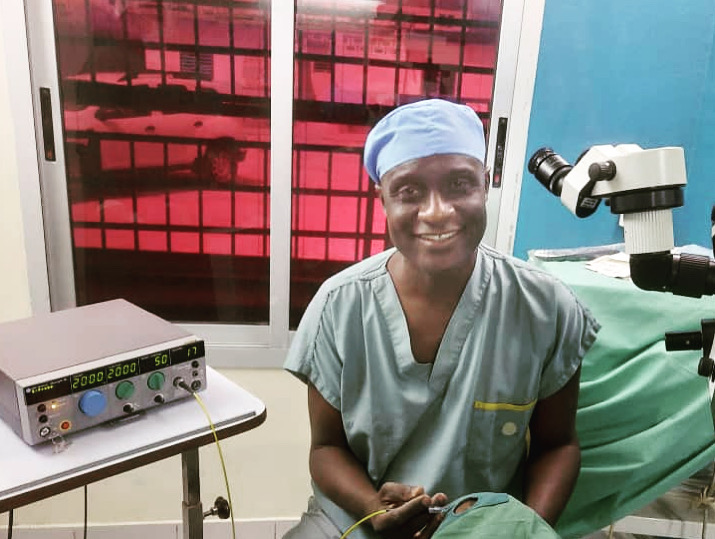G-Probe® Delivery Device

The Gold Standard For The Treatment of Glaucoma
The G-Probe® Delivery Device is used to perform Transscleral Cyclophotocoagulation (TSCPC) in continuous-wave mode. TSCPC has been the gold standard in the treatment of severe to end-stage glaucoma for over twenty years. In most cases, this highly effective, durable therapy is a patient’s last option or necessary for immediate and major IOP reduction. This simple, yet effective repeatable procedure can be performed in the office, operating room, or in conjunction with other procedures, like cataract surgery.
Surgical Guide
| Placement | Hold the G-Probe® Delivery Device parallel to the visual axis with the shorter edge of the footplate firmly between the anterior border and the middle of the limbus. Laser delivery is transscleral. |
|---|---|
| Application | Successive applications are spaced one-half the width of the G-Probe footplate apart by aligning a side of the probe over the indented center of the adjacent application. |
| Treatment | Administer 18-21 laser applications per treatment session over 270° (three quadrants, six or seven applications per quadrant), usually omitting the temporal quadrant. |
| Parameters | This array of treatment parameters has been called the “slow coagulation” technique and has proven effective for most eyes.3 Note that these treatment parameters are suggested by IRIDEX and are based on recommendations by experienced clinicians. Ultimately, it is the physician’s responsibility to determine appropriate treatment parameters for each case. Cautions: Keep the G-Probe tip immersed in a viscous liquid coupling agent (and the eye surface moist) and apply consistent pressure throughout the CWTSCPC treatment. Do not treat over sites of previous trabeculectomies. |

| Iris Color | Power | Duration | Energy per Application |
|---|---|---|---|
| Dark Brown | 1250 mW | 4000 ms | 5.00 joules |
| All other | 1500 mW | 3500 ms | 5.25 joules |
Patients to Consider
- The patient is not a surgical candidate for filtration surgery
- The patient has failed prior filtration surgery and is expected to fail further filtration surgery
- The patient has a secondary glaucoma in which failure is a likely outcome of filtration surgery (e.g., neovascular, inflammatory, postpenetrating keratoplasty, postscleral buckling).
- The patient has lost ambulatory level vision and is being treated with cyclophotocoagulation for comfort or to prevent further visual loss.
Ordering Information
The product number for the G-Probe is 15980. A box contains six probes. To order, speak with your local sales representative or email us at customerservice@iridex.com.
You can really consider TSCPC in almost all glaucoma situation, even malignant glaucoma. It is not just relegated to end-stage treatment anymoreDr. Jeffrey Kammer – Nashville, TN USA
TSCPC is a surgery that can be done before or after any other surgery. It is very versatile from that standpoint.Dr. Nathan Radcliffe – New York, NY USA
Recovery with TSCPC is much more rapid and the postoperative care much less involved than with someone who has had an incisional glaucoma case in a surgical center.Dr. Steven Vold – Springdale, AR USA
